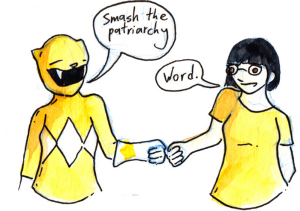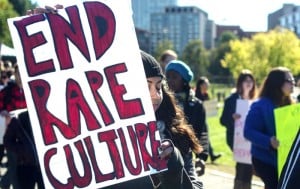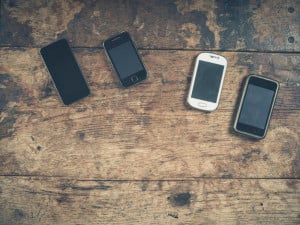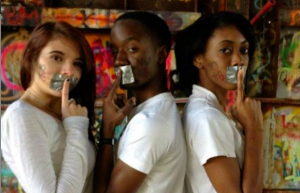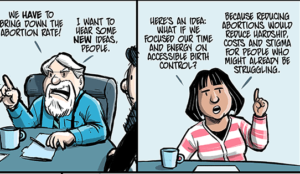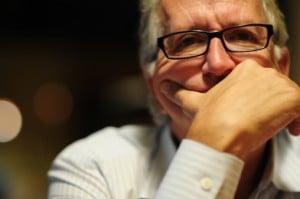Originally published on the Huffington Post and republished here with the author’s permission.
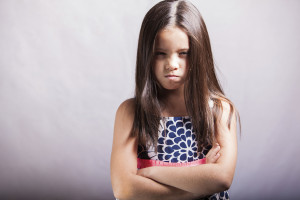
Source: iStock
It’s the second day of kindergarten and Sarah is sitting on the rug, playing with a new classmate’s hair. It’s fantastic hair, wild and curly.
The teacher snaps at her, “Stop it!” Sarah is also sitting with her legs bent behind her like a W, perhaps because she just turned five she has low muscle tone, or perhaps she’s just more comfortable that way.
“And we sit crisscross apple sauce here!” yells the teacher, letting out an exasperated sigh.
A battle of wills ensues, and Sarah is banished off of the carpet to sit next to a classroom aide where a tantrum devolves into a full-on meltdown, while the teacher tries to bend her at the waist, showing her “how we sit here.”
Her lanyard got stuck in Sarah’s hair, prompting more screams. She orchestrates a countdown from ten, as Sarah’s peers join in. Ten, nine, eight…
By now Sarah is throwing her shoes and the teacher is wondering out loud, “What is wrong with her? She needs to learn we don’t do that here!” She was told later that she could not participate in a scavenger hunt around the school with the rest of her classmates because she had made “bad choices.”
I had been assigned to the classroom through a local university to observe a student teacher. I stand there mortified by the interaction. It is day two of kindergarten, and unfortunately, Sarah is already labeled “bad.”
There is something wrong with her. The teacher believes this, and thanks to the public shaming, all of her classmates know it as well.
It is likely this label will stick with Sarah and following her throughout her academic career. It will inform her self-concept and as she grows older, will dictate her choices and behavior. It will have started with a curiosity-driven interaction with a classmate’s hair and her fateful preference to sit in a W instead of with her legs crossed.
I reported the incident to the principal who stared at me blankly and said, “What do you want me to do about this? It is the second day of school.” I reported it to the district, and was later told the teacher is an esteemed veteran. My direct employers, the university where the student teacher was enrolled, let me know I was a guest of the district.
In other words, voicing my concerns was not good guest behavior.
In that moment, school, district, and institution tasked with training teachers had all conspired to perpetuate a dangerous, and disturbingly common myth, that some kids are just bad.
The results of that mindset are devastating, and when that mindset is embraced in a classroom, where students eventually spend more time than they do with their families, it can have a destructive impact on our children, and society.
For students whose behavior is a function of trauma, poverty, or other challenging circumstances, callous responses can galvanize destructive beliefs: “I can’t trust people. Adults hurt me. I have no hope. I am bad.”
In October, footage of a school resource officer manhandling a high school student went viral. Outrage followed. Incidents like the one I observed in that Kindergarten classroom happen every day and over time can be just as devastating as the violent outburst caught on video.
The problem is, the Myth of the Bad Kid is much more insidious, often passing as an appropriate classroom management strategy. When schools, school districts, and teacher training programs normalize that belief, they are endorsing a attitudes and a behaviors that would be labeled as emotional abuse in an adult relationship.
When a child hears she is bad from her second day in Kindergarten and her peers are recruited to participate in her discipline, she is stripped of her dignity and innate sense of worth. When the only attention she receives is negative or corrective, she learns that people in authority get to define her.
She, like the system she is a part of, begins to normalize disrespectful, shame-oriented interactions.
That becomes her new reality, one that can have devastating consequences for her self-esteem and ability to recognize a healthy relationship.
On her first day of Kindergarten, Sarah learned she is bad. She also learned from her teacher that it is acceptable for people in positions of authority to employ aggression and shame. All of this happened with the tacit approval of the principal, district, and the institution tasked with teacher training.
Using fear and shame as a deterrent does nothing to encourage self-confidence and self-regulation and can increase the frequency of the problem behaviors.
There are other ways of encouraging good behavior while building a child’s sense of self-worth and preserving their dignity. A fundamental starting point is the belief that all children are innately good, deserving of unconditional positive regard, compassion, and respect.
[do_widget id=’text-101′]
Dani Bostick is a psychotherapist in Colorado Springs who works with individuals, couples, and families. A Maryland native and former Latin teacher, Dani now devotes most of her energy to disrupting the culture of shame and silence surrounding sexual abuse and assault. She uses the rest of her energy to take her dogs to the dog park, dominate her fantasy football league, and write about football for Behind the Steel Curtain and Crooked Scoreboard. Find her on Twitter, Facebook, and her website, www.danibostick.com.
Search our 3000+ articles!
Read our articles about:
Our online racial justice training
Used by hundreds of universities, non-profits, and businesses.
Click to learn more
Most Read Articles
- « Previous
- 1
- …
- 30
- 31
- 32






